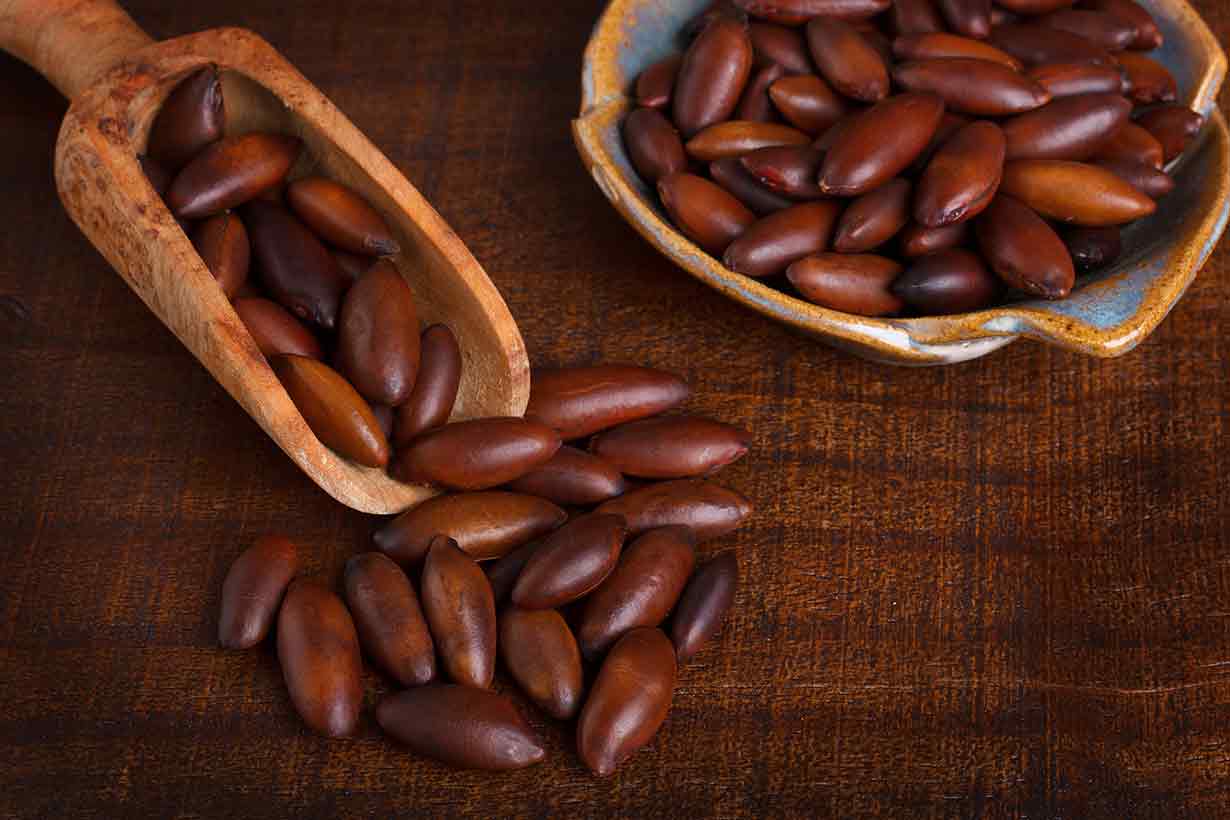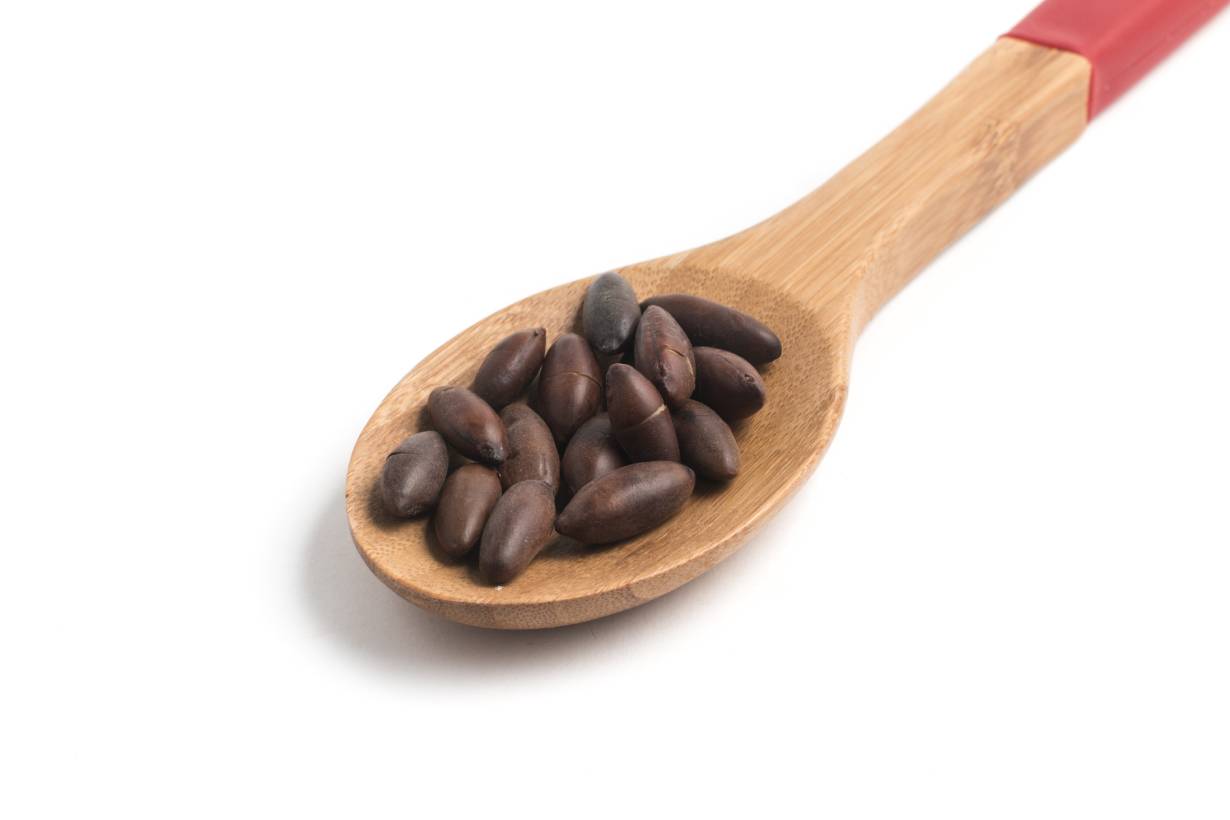Baru Nuts: Nutrition Facts, Benefits, and Research
Baru nuts have received media attention in recent years as a so-called “superfood.”
But what exactly are these nuts, and what do they offer nutritionally?
This article takes an in-depth look at baru nuts, their nutritional values, potential benefits, and how to use them.
What Are Baru Nuts?
Botanically, baru “nuts” are actually a type of seed that belongs to the legume family.
However, many foods that we know as “nuts” are not technically a true nut. This is the case with numerous other foods that we class and use as nuts, with almonds and cashews being two such examples.
Baru nuts grow on a large tree known as Dipteryx alata. The tree is undomesticated and native to Central South America (1).
For this reason, the nuts can come in a variety of shapes, and they will not be uniform in size.
Baru nuts are also known by several different names, which include:
- Baru nuts
- Baru seeds
- Brazilian savannah nuts
- Chiquitanian almond
Like many new-to-the-market foods, baru nuts have been aggressively marketed as a “superfood” in recent years. While it is true that the nuts are highly nutritious, care should be taken with exaggerated health claims.
The nuts are also used within the food industry for a wide range of different products, from whole nuts to flours, nut milk, and oils.
How Do They Taste?
Baru nuts have a pleasant taste and taste like something between a combination of cashews and peanuts.
The nuts are quite popular with most people who try them, and they tend to have positive reviews.
Nutrition Facts
Nutritionally, baru nuts contain fewer calories yet higher amounts of protein and fiber than most other nuts.
Unfortunately, full nutritional values for baru nuts are as yet currently unavailable within the USDA and NCCDB databases.
However, here are the known values per 3-tbsp (30-gram) serving based on branded nutrition facts obtained through the USDA database (2).
| Name | Amount | % Daily Value |
|---|---|---|
| Calories | 160 kcal | 8 % |
| Carbohydrate | 9.0 g | 3 % |
| Fiber | 3.99 g | 14 % |
| Sugars | 0.99 g | |
| Fat | 12.0 g | 15 % |
| Saturated | 2.5 g | 10 % |
| Protein | 7.0 g | 12 % |
Research has demonstrated that the main fatty acid in baru nuts is oleic acid, a monounsaturated fat. The second most prevalent fatty acid is linoleic acid, a polyunsaturated omega-6 (3).
Vitamins and Minerals
- Phosphorus: 833 mg (67% DV)
- Iron: 5 mg (28% DV)
- Potassium: 833 mg (18% DV)
- Calcium: 167 mg (13% DV)
Daily values were calculated using USDA data and the FDA’s published daily values (2, 4).
As previously mentioned, it is worth noting that full and extensive nutritional values are not currently available for baru nuts. However, research has also shown that they contain significant calcium, iron, zinc, and vitamin E (5).
Phytonutrients
Baru nuts contain a wide variety of polyphenols, including (5, 6):
- Hydroxycinnamic acids: caffeic acid, ellagic acid, ferulic acid
- Flavonols: quercetin, kaempferol, myricetin
- Flavanols: Catechin, epicatechin
Potential Health Benefits
There is relatively little in the way of human research involving baru nuts, but several trials have examined the nuts’ effect on various health markers.
Baru Nuts May Improve Various Markers of Cardiovascular Health
A randomized, placebo-controlled trial examined the effect of daily baru nut intake in adult women who were overweight or living with obesity (7).
Over an eight week intervention period, the women either consumed a baru nut-enriched diet (20 grams per day) or a baru nut-free diet.
At the end of the eight-week period, compared to the women following a baru nut-free diet, the women consuming daily baru nuts had:
- Slightly more pronounced decreases in body mass index and waist circumference
- Increased HDL (sometimes referred to as “good cholesterol”)
- More significant reductions in total cholesterol and LDL cholesterol levels
- Larger drops in triglyceride levels
However, it is worth noting that the study was relatively small (46 participants aged between the age of 20 and 59). Furthermore, not all of the results were statistically significant.
Thus, further research is necessary to establish a clearer picture of baru nuts’ effects on these health markers.
The Fatty Acids In Baru Nuts May Have Beneficial Anti-Inflammatory Effects
A randomized controlled trial examined baru nut oil’s effect over twelve weeks in hemodialysis patients (8).
In the study, one group of patients consumed five grams of baru nut oil per day, and the other group consumed five grams of mineral oil as a placebo. Twenty-nine patients completed the study, and researchers monitored the changes to various health markers over the 12-week period.
While most of these changes were not statistically significant, the patients consuming the baru nut oil experienced significant decreases in C-Reactive protein (CRP) levels over the twelve weeks. This effect was not seen in patients within the placebo group.
CRP is a marker of inflammation as the amount of CRP produced by the liver reliably increases when inflammation is present. Furthermore, chronically high CRP levels are associated with various chronic diseases, such as cardiovascular disease (9, 10).
While baru nut oil displayed anti-inflammatory effects in this study, this may be a common effect related to the unsaturated fatty acids within nuts. For instance, positive effects on CRP levels have also been demonstrated in randomized trials using other types of nuts like almonds (11, 12).
Furthermore, systematic reviews and meta-analyses of studies on nuts have found that greater nut intake may be associated with lowered inflammatory markers. However, this effect is not always consistent (13, 14).
Drawbacks
Are there any negative aspects of baru nuts that are worth considering?
Potential Allergies
There does not appear to be any reports of allergies to baru nuts in the scientific literature.
However, the nuts are relatively uncommon, and so they have not had the same exposure to vast amounts of people as other nuts.
As they are a tree nut/legume, allergies may exist.
Expensive
Since baru nuts are not commercially manufactured at the same mass scale as some other nuts, they are generally more expensive.
These nuts tend to cost more than most other nuts.
Exaggerated Claims
There are some claims that position baru nuts as a “superfood” that is healthier than all other nuts.
However, this marketing tends to come from the companies that sell the nuts and the paid influencers who promote them.
Unfortunately, there is no objective way to measure how healthy the nuts are compared to other options, particularly when there is only limited research behind baru nuts at this stage.
The straight truth is that baru nuts appear to be quite nutritious, and their nutritional values may confer some health benefits. However, this is the case for all nuts, so nothing makes the nuts a “must-have.”
How To Use Baru Nuts
Like other popular nuts, baru nuts are versatile, and there are many different ways to use them.
As a Snack
Firstly, we can eat the whole baru nuts by themselves. The nuts are relatively tasty, and they are usually sold pre-toasted and salted.
Flour
A study into the characteristics of cakes made with baru nut flour showed that the flour offers positive nutritional and sensory (e.g. texture) characteristics (15).
As a result, baru nut flour can work well for baking purposes.
Trail Mix
Mixing baru nuts with some other nuts, seeds, and dried fruit can make a tasty and unique trail mix.
Where Can You Buy Baru Nuts?
As previously mentioned, the nuts are relatively uncommon to find on store shelves.
However, it may be possible to find them in a local health store. The nuts are also available to buy online (disclosure: affiliate link).
Final Thoughts
Baru nuts are a tasty and nutrient-rich type of nut.
On the downside, they are relatively expensive for what they offer at this point, and similarly nutritious nuts are available for more affordable prices.
However, the nuts are certainly a nutritious option, and they may be worth a try for people who enjoy trying new and different foods.
2.https://fdc.nal.usda.gov/fdc-app.html#/food-details/1063993/nutrients
3.https://www.sciencedirect.com/science/article/pii/S096399692030051X
4.https://www.fda.gov/food/new-nutrition-facts-label/daily-value-new-nutrition-and-supplement-facts-labels
5.https://www.sciencedirect.com/science/article/pii/S0963996912001925
6.https://www.sciencedirect.com/science/article/pii/S096399692030051
7.https://www.sciencedirect.com/science/article/pii/S0899900718303903
8.https://www.sciencedirect.com/science/article/pii/S0965229920303575
9.https://medlineplus.gov/lab-tests/c-reactive-protein-crp-test/
10.https://www.ncbi.nlm.nih.gov/pmc/articles/PMC4825196/
11.https://www.sciencedirect.com/science/article/pii/S1756464614002230
12.https://pubmed.ncbi.nlm.nih.gov/19874636/
13.https://www.ncbi.nlm.nih.gov/pmc/articles/PMC4997300/
14.https://bmjopen.bmj.com/content/7/11/e016863
15.https://www.ncbi.nlm.nih.gov/pmc/articles/PMC5756196
Related Articles
16 Types of Nuts: How Do They Compare?
Cashew Nuts 101: Nutrition Facts, Benefits, Drawbacks


